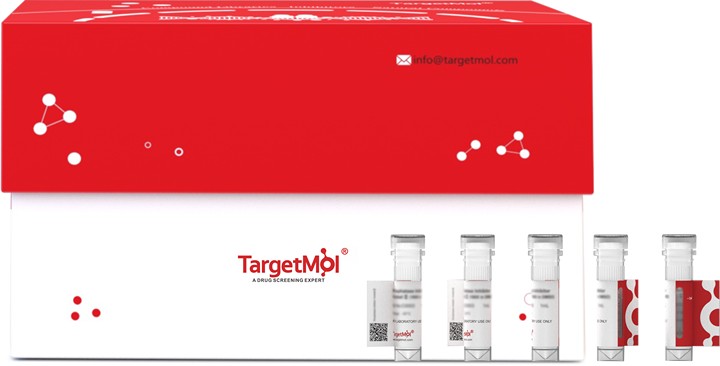购物车
全部删除  您的购物车当前为空
您的购物车当前为空
CD40 Ligand Protein, Canine, Recombinant is expressed in HEK293 mammalian cells. The predicted molecular weight is 16 kDa and the accession number is O97626.

| 规格 | 价格 | 库存 | 数量 |
|---|---|---|---|
| 5 μg | ¥ 458 | 6-8日内发货 | |
| 10 μg | ¥ 747 | 6-8日内发货 | |
| 20 μg | ¥ 1,230 | 5日内发货 | |
| 50 μg | ¥ 2,830 | 5日内发货 |
| 生物活性 | Activity testing is in progress. It is theoretically active, but we cannot guarantee it. If you require protein activity, we recommend choosing the eukaryotic expression version first. |
| 产品描述 | CD40 Ligand Protein, Canine, Recombinant is expressed in HEK293 mammalian cells. The predicted molecular weight is 16 kDa and the accession number is O97626. |
| 种属 | Canine |
| 表达系统 | HEK293 Cells |
| 标签 | Tag Free |
| 蛋白编号 | O97626 |
| 别名 | CD40 ligand |
| 蛋白构建 | A DNA sequence encoding the canine CD40LG (O97626) (Met112-Leu260) was expressed with two additional amino acids (Gly & Pro) at the N-terminus. Predicted N terminal: Gly |
| 蛋白纯度 | > 95 % as determined by SDS-PAGE |
| 分子量 | 16 kDa (predicted); 19 kDa (reducing conditions) |
| 内毒素 | < 1.0 EU/μg of the protein as determined by the LAL method. |
| 蛋白性状 | Lyophilized powder |
| 缓冲液 | Lyophilized from a solution filtered through a 0.22 μm filter, containing PBS, pH 7.4. Typically, a mixture containing 5% to 8% trehalose, mannitol, and 0.01% Tween 80 is incorporated as a protective agent before lyophilization. |
| 复溶方法 | A Certificate of Analysis (CoA) containing reconstitution instructions is included with the products. Please refer to the CoA for detailed information. |
| 存储 | It is recommended to store recombinant proteins at -20°C to -80°C for future use. Lyophilized powders can be stably stored for over 12 months, while liquid products can be stored for 6-12 months at -80°C. For reconstituted protein solutions, the solution can be stored at -20°C to -80°C for at least 3 months. Please avoid multiple freeze-thaw cycles and store products in aliquots. |
| 运输方式 | In general, Lyophilized powders are shipping with blue ice. |
| 研究背景 | The cluster of differentiation (CD) system is commonly used as cell markers in immunophenotyping. Different kinds of cells in the immune system can be identified through the surface CD molecules which associating with the immune function of the cell. There are more than 320 CD unique clusters and subclusters have been identified. Some of the CD molecules serve as receptors or ligands important to the cell through initiating a signal cascade which then alter the behavior of the cell. Some CD proteins do not take part in cell signal process but have other functions such as cell adhesion. CD154, also known as CD40 ligand or CD40L, is a member of the TNF superfamily. While CD154 was originally found on T cell surface, its expression has since been found on a wide variety of cells, including platelets, mast cells, macrophages and NK cells. CD154's ability is achieved through binding to the CD40 on antigen-presenting cells (APC). In the macrophage cells, the primary signal for activation is IFN-γ from Th1 type CD4 T cells. The secondary signal is CD40L on the T cell, which interacting with the CD40 molecules, helping increase the level of activation.Cancer ImmunotherapyCo-stimulatory Immune Checkpoint TargetsImmune CheckpointImmune Checkpoint Detection: AntibodiesImmune Checkpoint Detection: ELISA AntibodiesImmune Checkpoint Detection: WB AntibodiesImmune Checkpoint ProteinsImmune Checkpoint TargetsImmunotherapyTargeted Therapy |